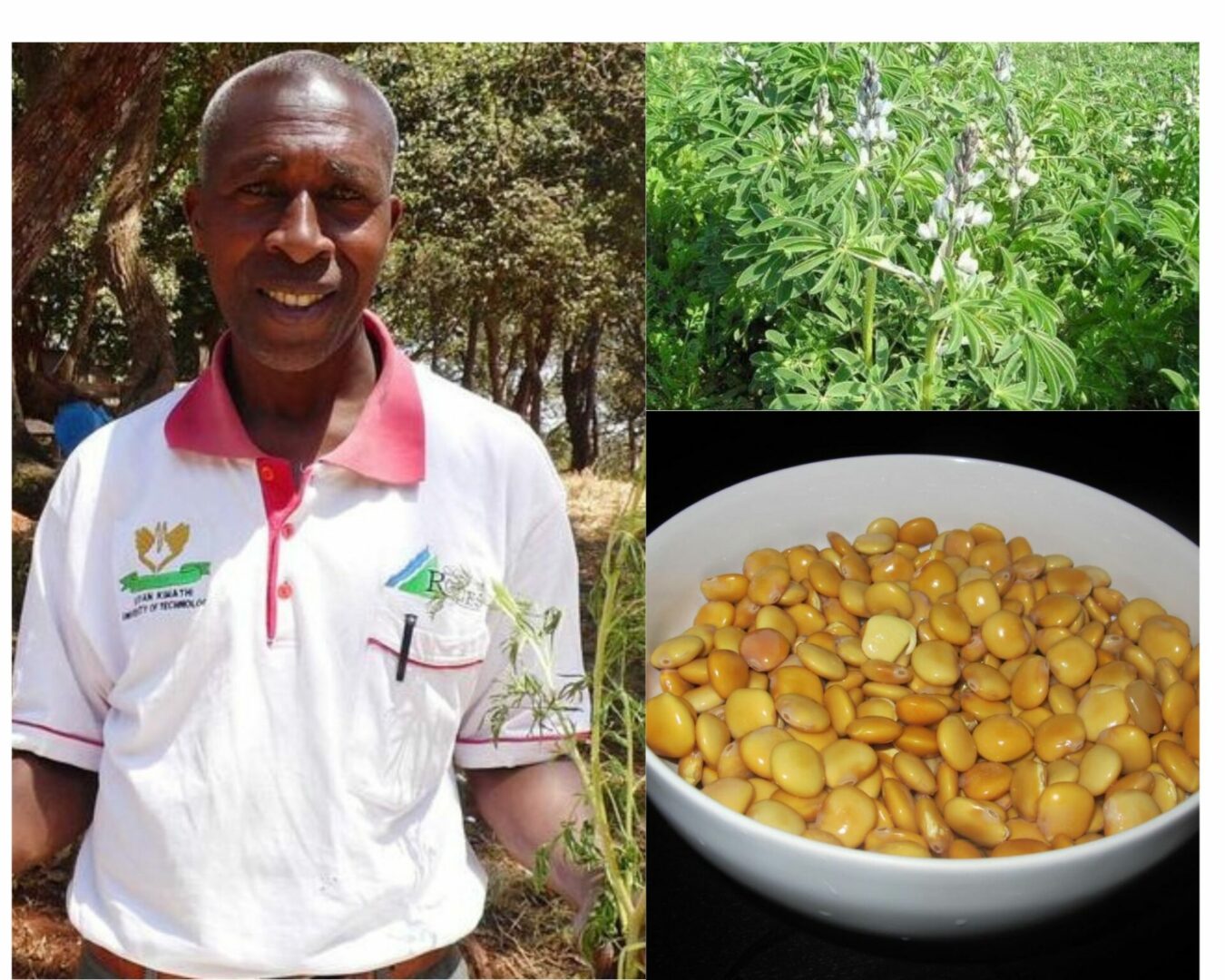Juma Gichohi, a dairy farmer from Nyeri County, is staring at higher profits after discovering a new way of increasing milk production.
The farmer who mixes the multi-nutrient sweet lupin beans with maize flour to feed his semi-indigenous cattle has so far increased milk output by 3 litres.
“The beans (lupin)are rich in nutrients that are found in commercial feeds. The nutrients span from vitamins to mineral elements and the body building proteins.”
“I have seen an improvement in milk production after reducing the Napier grass and supplementing the feeds with the mixture,” Gichohi said.
The farmer who has so far cut down the amount of Napier grass consumed by his cows says his two semi exotic cow, has increased milk production from 12 litres to 15 litres per day after discovering this exotic bean which act as a nutrient supplement.
The bean has a short maturity period and takes four months to mature. After harvesting, they must be dried well before being crushed into flour.
Samuel Mwaniki: I started earning big after adopting plastic mulching
The farmer adds one kilo of lupine floor to three kilos of maize flour. One hundred grams of lupine flour contain 36.2 percent of proteins; this translates to 36.2 grams out of the 100 grams.
Other mineral elements present in the bean include magnesium, manganese, Calcium, and iron, as well as Vitamins C, B1, and B9.
“There is no constipation after feeding because of the about 40 percent deposit of fibre, which helps in digestion,” he said.
Feeding more lupin seed in maize is, however, not recommended because cows find the feed bitter.
Cows fed with lupin-maize mixture for the first time need to be introduced to it gradually. Farmers can add a little mineral salt, molasses, or other feed to the mixture to help the cow start eating it.
According to the Kenya Agricultural and Livestock Research Organization (KALRO), Sweet Lupin can produce 6 tons of dry matter/Ha (2.4 tons/Acre) of green forage when harvested at 4 months.
KALRO says that the bean can be used as an alternative to dairy meal to save money and get more milk. In addition, Lupin leaves and roots can increase soil fertility after seed harvest.
For high yields, start to harvest when the pods change colour from green to yellow and the lower leaves start falling off.
Did you love the story? You can also share YOUR story and get it published on Bizna Click here to get started.




